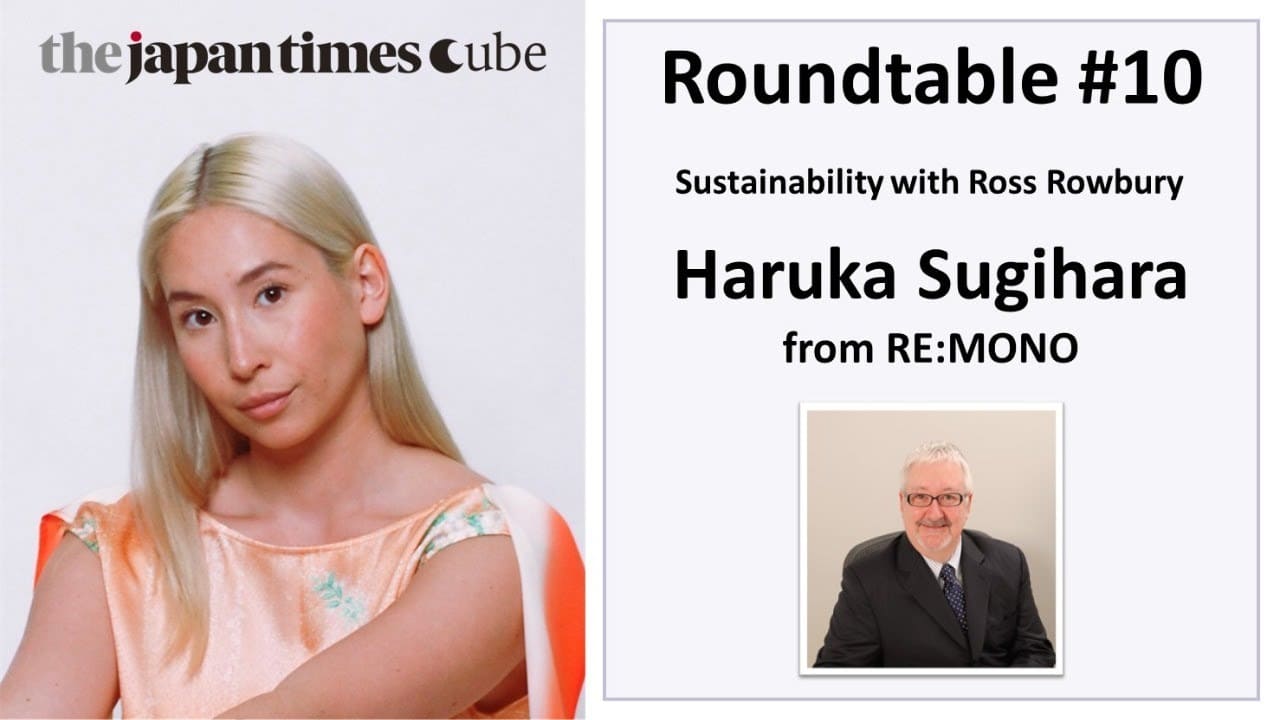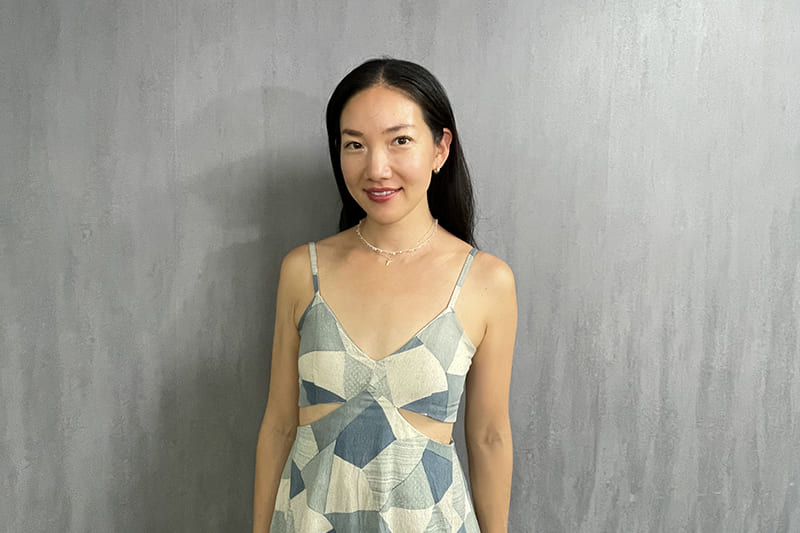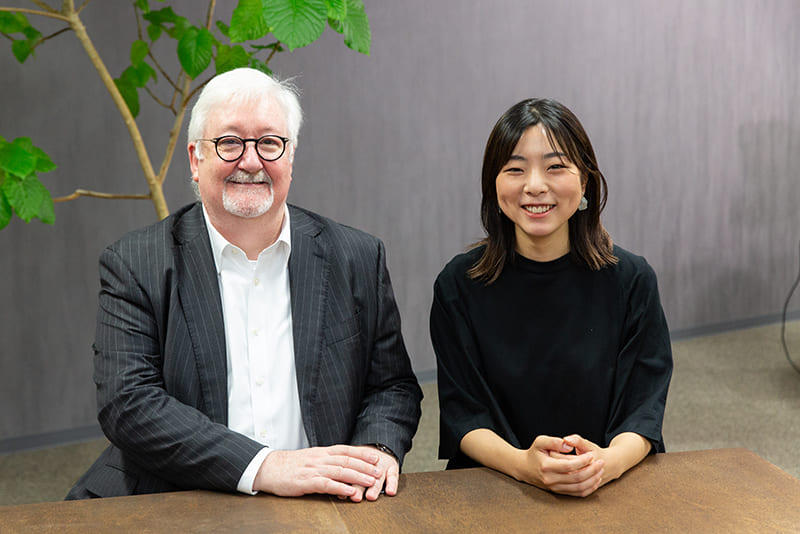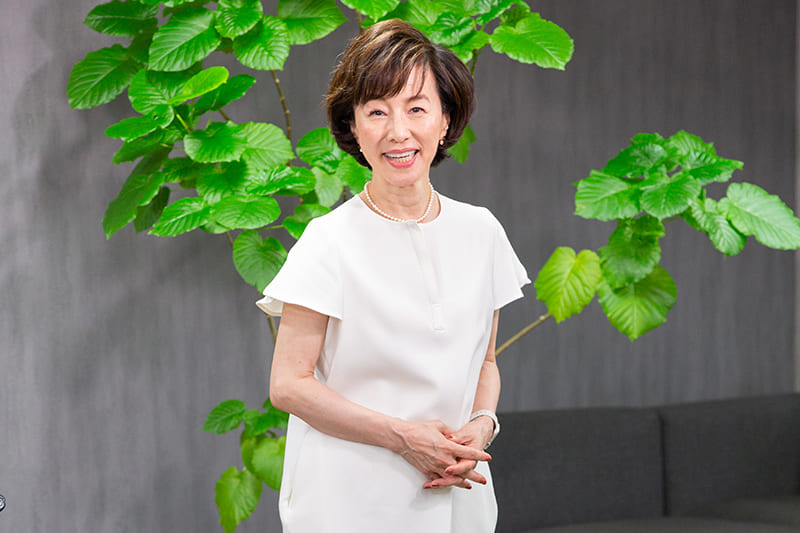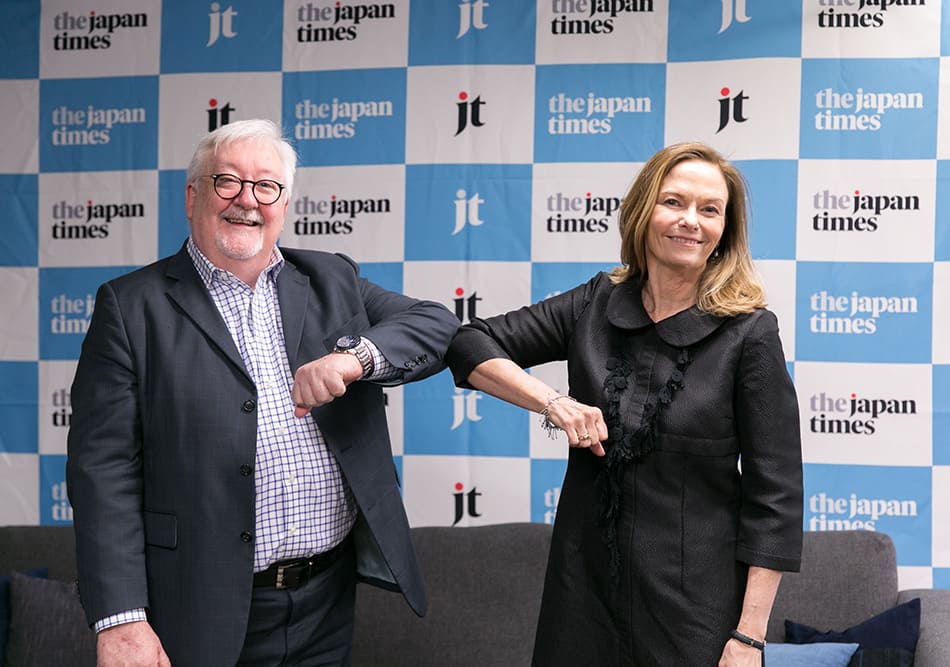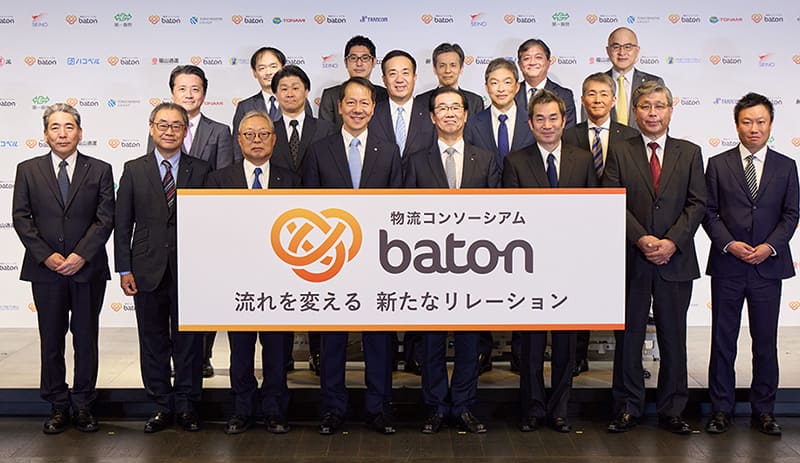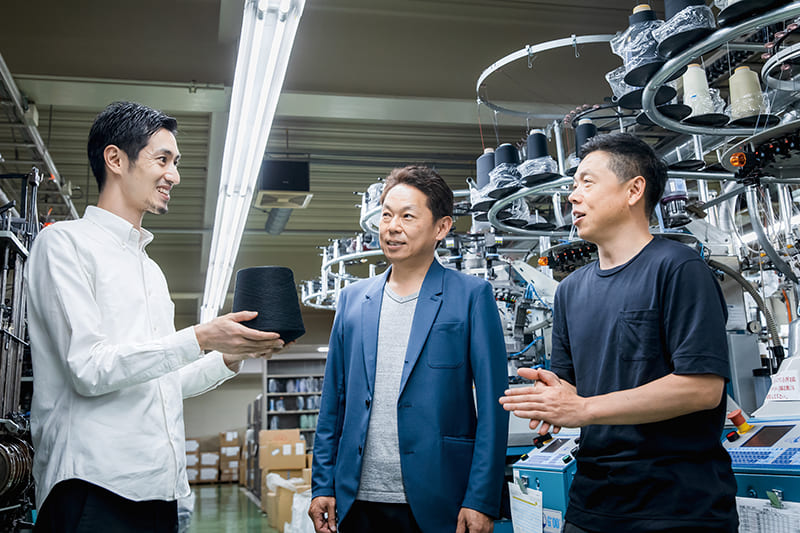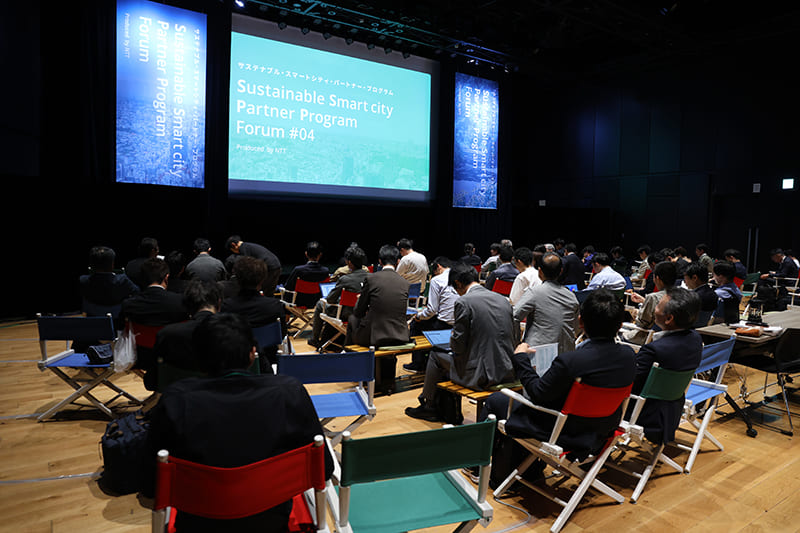July 30, 2021
The better for wear: Designer upcycles old kimonos
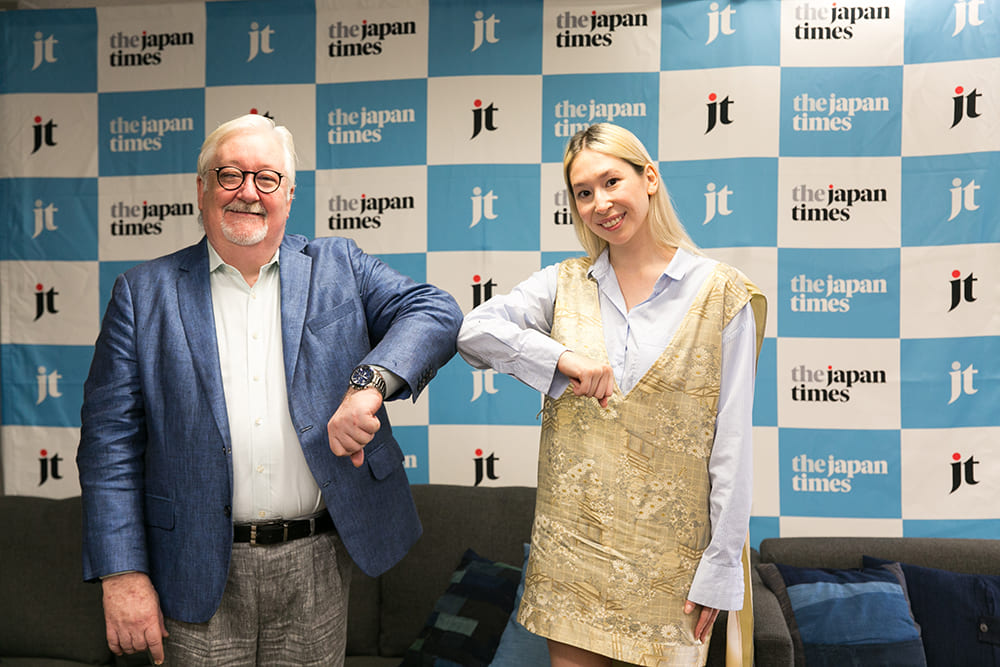
With roots in Belgium and Japan, Haruka Sugihara is a young designer and entrepreneur with a passion for taking the traditional beauty of secondhand kimonos and upcycling them to suit today’s modern lifestyle. She spoke to The Japan Times about the journey of discovery that led to the launch of her unique business, Re:mono.
In the past, clothes were generally designed to last and were often worn for many years. However, the current culture of mass-produced apparel, coupled with the power of marketing and social media, has led to many of us thinking we need to update our closet every three months or so. “There were trends in the past, for sure, but they would move more slowly,” Sugihara said. “The cycle and pressure to keep up is faster now.”
Fast fashion, full landfills
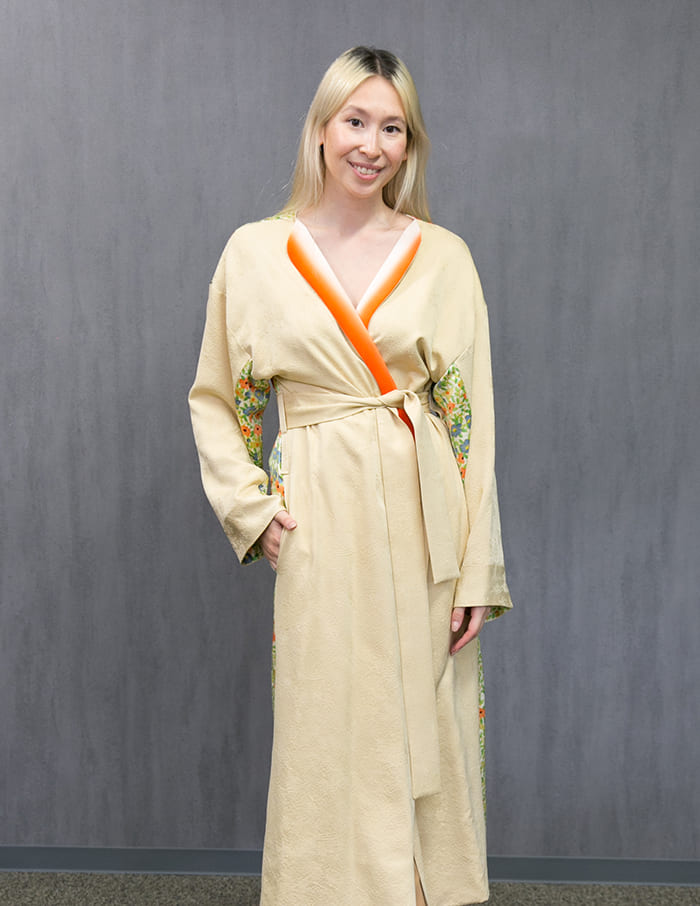
Moreover, fast fashion places a huge burden on the Earth’s resources. “To put a number on it, one cotton T-shirt requires 2,700 liters of water! Using new fabrics has such a big impact on our world today,” Sugihara explained. According to a report published by Edge, the fashion industry is reportedly the second-biggest in terms of landfill waste, accounting for around 4 percent of the world’s total.
While some clothing manufacturers are making efforts to collect worn clothing from customers with the goal of recycling the fabrics, Sugihara points out that this still takes a lot of water, electricity and chemicals, and so producing new materials from old fabric is not necessarily the best way forward.
“The problem is not so much wanting to keep up with fashion, but the waste. There are other ways, such as upcycling and changing small things in order to update what you wear. This could be the future of fashion,” she said.
Secondhand shop serendipity
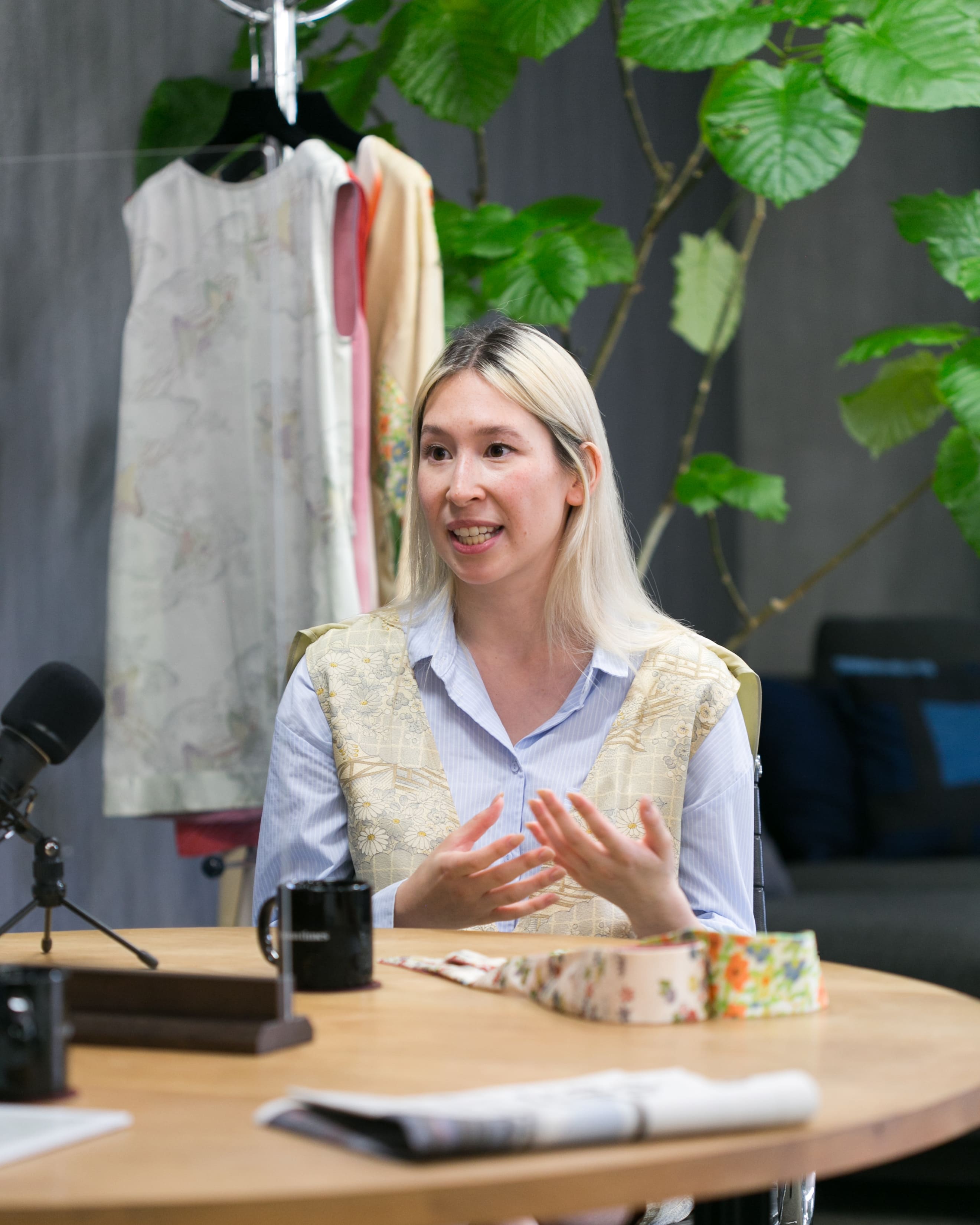
Although she has Japanese roots and was interested in sustainability, Sugihara had little knowledge or experience with either kimonos or upcycling until she moved to Japan two years ago, upon finishing her studies in her homeland of Belgium.
“I discovered that clothes shopping here was hard for me, as I’m a bit taller than average, and so I would go to secondhand stores. I would often see old kimono in the corner with their sparkling colors and think, ‘How beautiful!’”
On a whim, Sugihara decided to purchase a purple kimono with an appealing texture that caught her eye, and this was the start of a brand-new venture. “The colors are amazing; the patterns are unique — it’s just that kimono are so hard to wear! By upcycling, I think we’re really going in an interesting direction,” she said. The garment becomes more contemporary but still maintains the essence of the kimono through the elegance and the material.
Although people often remark on the lack of individuality in Japan, Sugihara points out that each kimono is a unique garment with colors, patterns and accessories that allow the wearer to express themselves.
She recently completed 25 pieces for her summer collection. The initial search for materials took Sugihara around Japan, visiting various secondhand shops as she looked for vintage kimonos that spoke to her. “Each one has a unique story behind it. It’s fun to imagine where might it have come from or who wore this kimono before. It has truly become an adventure!” she said with a smile.
The magic of kimonos
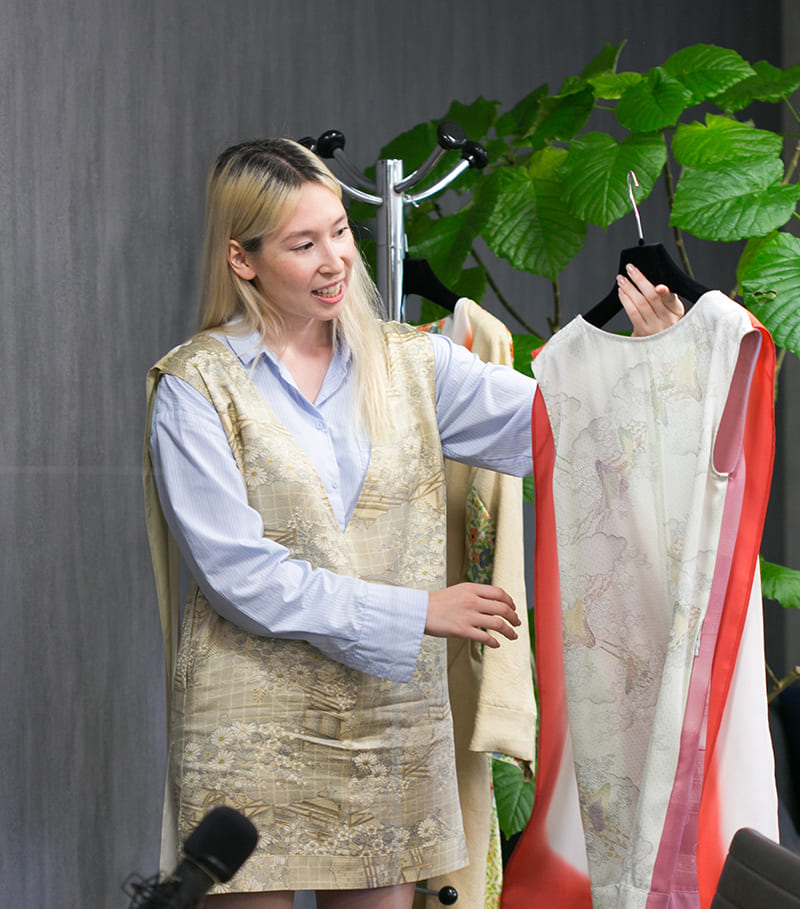
Brand-new kimonos, especially those by a well-known designer, are prohibitively expensive. However, due to the difficulty of putting them on and the limited occasions for wearing them, some of these beautiful garments are relegated to the owner’s closet, or eventually passed on to a secondhand shop, where they can be purchased for a fraction of the original price.
Sugihara notes that while a kimono may have a small stain or slight damage that renders it unwearable in the original form, this is no problem when upcycling, as she can work around any imperfections.
The design process only starts once the kimonos are in her possession. Sugihara draws inspiration from seeing the colors and prints in a kimono she has purchased and starts experimenting with ideas.
“I have to unstitch and take apart each kimono by hand, one by one. It’s a lot of work, but it’s also amazing as you realize there is so much fabric that isn’t even usually seen, as it’s on the inside,” she explained. “And then I try to mix and match them. It’s what a friend of mine called ‘kimono magic’: They blend in nicely and somehow complement each other.”
Her pieces are designed to be multifunctional, allowing the wearer to enjoy them in different ways, and with modern touches such as pockets and a fitted shape adapted to a woman’s silhouette.
Bridging cultures with fashion
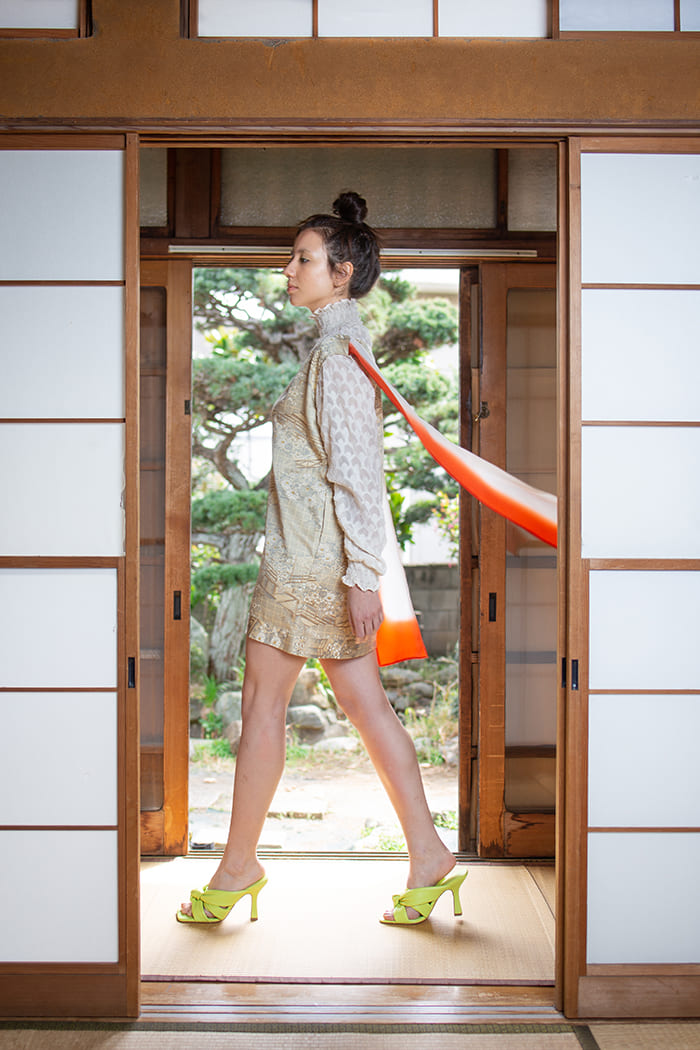
At first Sugihara was concerned that she might be “stepping on toes” by dismantling kimonos and upcycling them, so she consulted with a family friend who was a kimono designer. She was relieved when he expressed his enthusiasm, giving her the confidence she needed.
She is sensitive to the issue of culture appropriation and that kimonos are specifically bound to Japan, but feels that if worn with respect, there is no problem with giving kimonos a modern twist. She considers herself very fortunate to have a background that allows her to bridge Japanese and European culture using fashion as the platform. She has now started work on her winter collection, and hopes to expand to 40 pieces this time around.
For now, the majority of Sugihara’s customers are in Europe, and her designs are available through her website and one store in Belgium. Eventually she wants to develop the Japan side of her business through partnering with others who share her values. “I really enjoy the personal connection when I can connect with clients, either online or in person,” she said. “It’s really great to meet the people and have such a short supply chain. That is what big brands often don’t have.”
“There are so many opportunities out there for anyone to upcycle anything. That’s the beauty of it — you can be so creative,” Sugihara said with an eye to the future. “I do hope that the concept of upcycling kimono becomes better known globally, and that I can spread awareness of the sustainable aspect, as well as the cultural aspect. We’ll see where it goes!”

